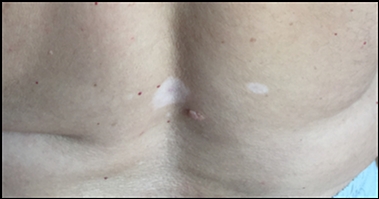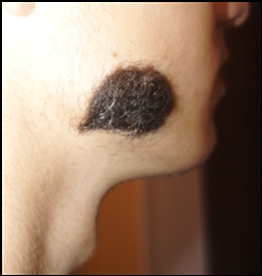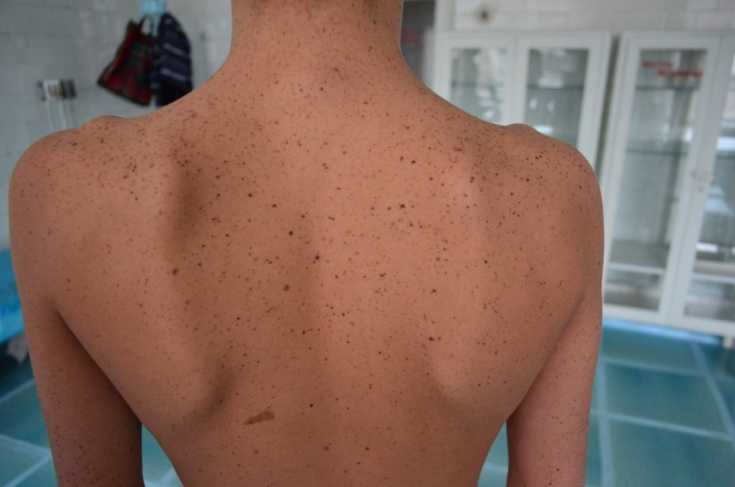Thinking about pigmentation and its disorders, we always think about melanin – the main pigment that forms the color of the skin, hair and eyes, protects the human skin from photoaging, cancer, sunburn, photodermatosis. But is melanin the only pigment involved in skin coloration? What types of skin pigmentation disorders are most common in the practice of a cosmetologist? What correction methods are used to eliminate these problems? Doctors Natalia and Galina Reznichenko answer these questions.



Natalya Yuryevna Reznichenko, Doctor of Medical Sciences, dermatovenereologist of the highest category, member of the Ukrainian Association of Dermatovenereologists, Cosmetologists, American Academy of Dermatology.

Reznichenko Galina Ivanovna, professor, doctor of medical sciences, obstetrician-gynecologist of the highest category, member of the Association of Obstetricians-Gynecologists of Ukraine.
What affects skin pigmentation in normal and diseased conditions
In fact, skin color depends on various pigments, some of which are present in the norm, and some are found in certain diseases or enter the human body from the outside.
Normal human skin pigments include:
-melanins – a group of brown, red-brown and black-brown pigments;
- oxyhemoglobin, which has a bright red (scarlet) color;
- carboxyhemoglobin (reduced hemoglobin) of a dark cherry color;
- carotene, which gives the skin yellow color in the presence of a large amount of foods containing it in the diet (carrots, sea buckthorn, etc.).
In diseases of the liver and biliary tract, a yellow tint of the skin may also be noted, which is due to bilirubin and other bile pigments. Brownish-yellow pigmentation of the skin (shins) may be associated with hemosiderin deposition as a result of acute and chronic vascular disease. The use of certain medications and trace elements can also lead to changes in skin color. For example, excessive consumption of silver preparations causes a bluish-violet hue of the skin.
The most common pigmentation disorders: what causes them
In cosmetology and dermatology practice, pigmentation disorders caused by changes in the synthesis of melanin pigments are most common. The formation of melanin also occurs in melanocytes, which are found in the skin at the level of the epidermis, dermis and in the region of the hair follicles.
Melanocytes, thanks to their processes, connect with keratinocytes and transfer already formed melanin to them, due to which uniform skin pigmentation is formed.
The starting substance for the formation of melanin is the amino acid tyrosine. The synthesis of melanin is a complex biochemical process that proceeds with the participation of the enzyme tyrosinase, copper and zinc ions.
In cosmetology and dermatological practice, pigmentation disorders caused by changes in the synthesis of melanin pigments are most common.
Ultraviolet rays, oxygen and a number of hormones (melanocyte-stimulating, adrenocorticotropic, thyrotropic, adrenal cortex hormones, estrogens, etc.) take part in the regulation of melanin formation. For example, with adrenal insufficiency, a bronze-brown color of the entire skin is noted (while the genitals, perineum, and midline of the abdomen are more intensely stained). During pregnancy and treatment with estrogens, pigmentation of the nipples, genitals, forehead, temporal regions, cheeks, upper lip is observed.
Using Histan Cream SPF 50+ for albinism and vitiligo
Insufficient amount of melanin or its complete absence is characterized by the presence of hypo- and depigmented spots. A congenital disorder of melanin synthesis is called albinism and is associated with the absence or blockade of the tyrosinase enzyme. Albinism is not treatable, but requires constant use of sunscreens with high sun protection factor (SPF50+).
The decrease in pigmentation acquired over a lifetime, due to the disappearance of melanin in certain areas or on the entire skin, is called vitiligo. The appearance of hypo- and depigmented spots on the skin without obvious reasons (for example, a skin injury or a previous inflammatory process) is an indication for a consultation with a dermatologist.
There are various ways to treat vitiligo: phototherapy, climatotherapy, taking vitamins and microelements (copper, zinc). Unfortunately, it is not always possible to achieve a therapeutic effect with this disease.
It should be remembered that the presence of vitiligo requires mandatory skin protection from ultraviolet rays.

For vitiligo and albinism, it is necessary to constantly apply highly effective sunscreens, such as Histan Cream SPF 50+ from Histomer, whose products are exclusively presented on the domestic market by Intercosmetic Group.
The most important advantage of this cream is the maximum degree of protection against UVA and UVB rays. In addition, Histan Cream SPF 50+ is suitable for hypo- and depigmented skin with vitiligo and albinism, for hypersensitive and children's skin, as well as for such "problem" skin. areas like acne, fresh scars, nevi, rosacea, actinic keratosis. Histan Cream SPF 50+ is recommended for use in the post-peel period.
Preparations for the correction of various types of hyperpigmentation
Increased synthesis of melanin in the skin leads to the formation of hyperpigmented spots. Hyperpigmentation is divided into congenital and acquired. In addition, primary hyperpigmented spots (which occur against the background of intact skin) and secondary ones (which appear as a result of a previous pathological process) are distinguished. An example of a primary hyperpigmented spot is a nevus (mole).
Nevuses – pigmentation disorders not subject to cosmetic correction
A nevus is a localized malformation with accumulation of melanocytes in specific areas of the skin. May occur at any age. Some nevi may look atypical (examples of such nevi are shown in the photographs).

Nevus pilaris

Nevus Becker
Nevuses are not subject to cosmetic correction! Despite the fact that they are benign formations, only oncologists can perform their excision. This is due to the fact that clinically it is very difficult to distinguish a nevus from a malignant melanoma.
Typical, but not mandatory, signs of melanoma are:
- asymmetry;
- uneven edges;
- uneven coloring;
- large sizes (more than 6 mm);
- change size, growth acceleration;
- structural differences.
Nevuses are not subject to cosmetic correction! Despite the fact that they are benign formations, only oncologists can perform their excision.
If a nevus has at least one of these signs, the client should be urgently referred for a consultation with a dermatologist or oncologist!
Lentigo Correction Program: Histomer FORMULA 201
One of the most common reasons for clients to visit cosmetologists is lentigo - light brown spots. Juvenile lentigines occur in childhood and adolescence and usually do not cause alarm. While senile (senile) lentigo appear in mature, elderly and senile age, they are a manifestation of skin photoaging, they require correction and the choice of brightening cosmetics.
The main method of cosmetic correction of lentigo – performing chemical peels. Despite the current opinion about the need for "special brightening peels", in most cases of lentigo, the use of non-aggressive peels with mandelic and glycolic acid is sufficient.
One of the most effective and at the same time safe peels is the program Histomer FORMULA 201. The core of the formula is represented by mandelic acid, glycolic acid and gluconolactone. The potentiating action in this innovative peeling system is provided by arginine, carnitine and betaine. Zantalene extract has a calming effect, acting on the sensory receptors of the skin. The question arises about the need for a combination of mandelic and glycolic acids in the peeling system. It should be said that mandelic acid has several advantages: it is less aggressive than glycolic acid, causes less discomfort, has an antiseptic effect, and can be used at any time of the year (subject to adequate photoprotection).
In addition to the course of chemical peels, the correction of lentigo consists in the regular use of brightening and photoprotective cosmetics in home skin care.



Acquired hyperpigmentations include chloasma and melasma. They have different clinical manifestations and are due to different causes.
Chloasma occurs in women during pregnancy, with hormonal disorders, taking oral contraceptives. It is characterized by the appearance on the skin of the face (mainly in the forehead, cheeks, temples, less often - eyelids and chin) of symmetrical hyperpigmented spots of irregular shape, with sharply defined borders, of different sizes, prone to merging with each other with lesions of large areas of the skin. Usually easily amenable to cosmetic correction.
Melasma is not associated with hormonal changes and oral contraceptives. Occurs against the background of intense ultraviolet radiation and can be a marker of liver disease. It is characterized by the appearance of hyperpigmented spots with fuzzy boundaries in the lower half of the face. More difficult to correct than chloasma.
Lentigo (regardless of their variety), chloasma and melasma require long-term regular use of brightening cosmetics.Histomer Illuminating Formula is the most effective line of cosmetics, acting at different levels of pigmentation formation. It has both curative and preventive effects.
1. The first point of application of the Histomer Lightening Formula is the reduction of melanin production by melanocytes, which is ensured by the presence of licorice root extract and the enzyme of Aspergillus fungi.
2. The second point of action of Histomer's Illuminating Formula is to reduce the transfer of melanin from melanocytes to keratinocytes due to the presence of 1-methylhydantoin-2-imide and niacinamide in the formula. Due to its dual mechanism of action, Histomer Illuminating Formula provides a fast, long-lasting effect in eliminating pigmentation of various etiologies.

Thus, the Histomer Brightening Formula provides additional hydration, antioxidant and anti-aging benefits. The line is represented by cleansing milk, smoothing and brightening lotion, brightening day cream and night concentrate. Recommended for regular use.
See also:
Express remedies for skin recovery after cosmetic procedures
Thus, success in the cosmetic correction of skin pigmentation disorders will depend not only on their varieties and prevalence, but also on the correct choice of professional procedures and regular home cosmetic care.The article was written according to the recommendations and materials of the company
"Intercosmeticgroup".
Follow us on








Add a comment